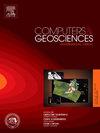A method for preserving three spatial features in the upscaling of categorical raster data
IF 4.4
2区 地球科学
Q1 COMPUTER SCIENCE, INTERDISCIPLINARY APPLICATIONS
引用次数: 0
Abstract
Raster resampling can be used to modify the resolution of raster data to satisfy specific application requirements for geographical information systems (GIS). However, with an increase in raster cell size, a process known as upscaling, various spatial features are inevitably lost, resulting in reduced data accuracy. Categorical raster data refer to a raster dataset where each specific raster value corresponds to a category, such as land use types or vegetation cover, rather than continuous numerical values. To improve the accuracy of upscaled data, this study proposes a method for preserving the shape, topological, and area features in categorical raster upscaling. First, we refined the shape index calculation to accurately assess the shape of the raster zones and corrected the shape errors using neighborhood operations. Second, we resolved the topological errors by reassigning the cells between the raster zones. Finally, we calculated the number of cells that needed adjustment in each zone and reassigned the cells on the zone boundaries accordingly, to reduce the overall area error. The results demonstrated a 30.5235 % improvement in the accuracy, compared with the accuracy of the nearest neighbor method for upscaling from 5 to 10 m. The effectiveness of the proposed method decreased with increasing target cell size, with the method being ineffective at 35 m. Furthermore, the method demonstrates wide applicability across different datasets. By efficiently and simultaneously maintaining these spatial features during upscaling, our method can offer users more accurate resampled datasets as input for GIS applications, thereby enhancing the precision of the outputs.
一种在分类栅格数据上尺度中保留三个空间特征的方法
栅格重采样可用于修改栅格数据的分辨率,以满足地理信息系统(GIS)的特定应用要求。然而,随着栅格单元大小的增加(这一过程被称为 "升维"),各种空间特征不可避免地会丢失,导致数据精度降低。分类栅格数据指的是每个特定栅格值对应一个类别(如土地利用类型或植被覆盖)的栅格数据集,而不是连续的数值。为了提高放大数据的精度,本研究提出了一种在分类栅格放大中保留形状、拓扑和面积特征的方法。首先,我们改进了形状指数的计算方法,以准确评估栅格区域的形状,并使用邻域运算纠正形状误差。其次,我们通过重新分配栅格区之间的单元来解决拓扑误差。最后,我们计算了每个区域内需要调整的单元格数量,并相应地重新分配了区域边界上的单元格,以减少整体面积误差。结果表明,与最近邻方法相比,从 5 米放大到 10 米的精度提高了 30.5235%。通过在缩放过程中同时有效地保持这些空间特征,我们的方法可以为用户提供更精确的重采样数据集,作为 GIS 应用的输入,从而提高输出的精度。
本文章由计算机程序翻译,如有差异,请以英文原文为准。
求助全文
约1分钟内获得全文
求助全文
来源期刊

Computers & Geosciences
地学-地球科学综合
CiteScore
9.30
自引率
6.80%
发文量
164
审稿时长
3.4 months
期刊介绍:
Computers & Geosciences publishes high impact, original research at the interface between Computer Sciences and Geosciences. Publications should apply modern computer science paradigms, whether computational or informatics-based, to address problems in the geosciences.
 求助内容:
求助内容: 应助结果提醒方式:
应助结果提醒方式:


